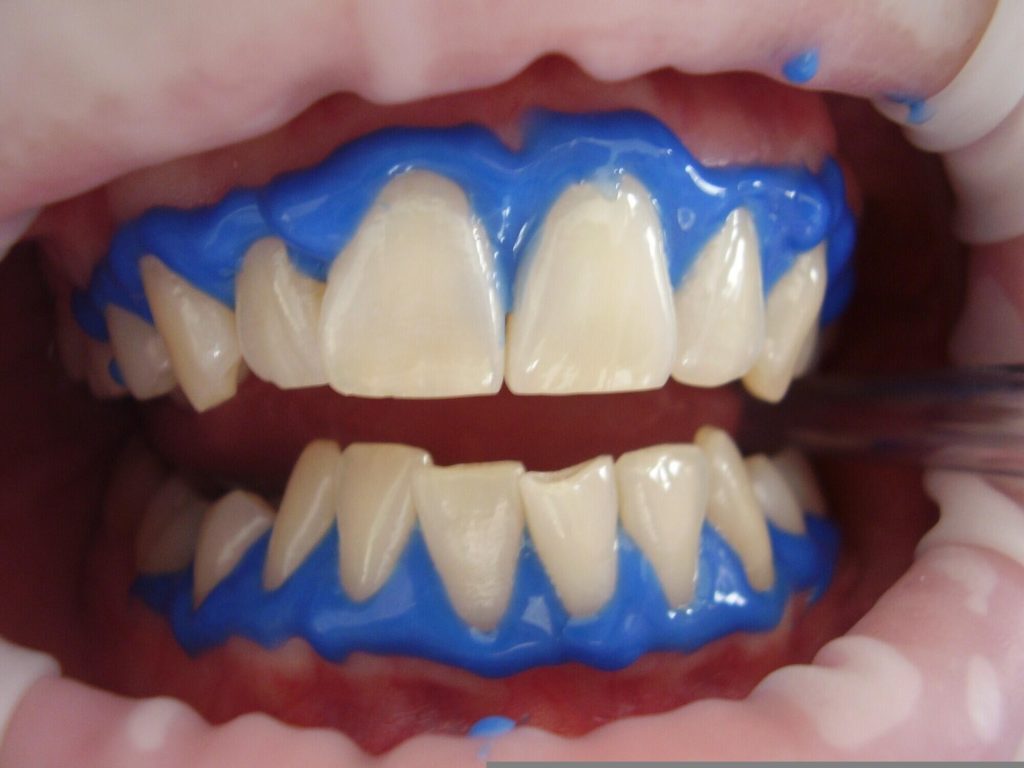A bright smile makes a strong impression and boosts confidence. Many people want whiter teeth but are unsure where to start. Teeth whitening options are now easier to access than ever before.
Understanding the choices available can help you make a safe and effective decision. Some methods work faster, while others are gentler on sensitive teeth. Costs and convenience also vary depending on the approach you choose.
Explore these teeth whitening options to find what fits your lifestyle and smile goals.
In-Office Whitening Treatments
Professional whitening treatments at the dentist provide quick results. They use stronger whitening agents than over-the-counter products. The process is carefully monitored to prevent gum irritation. Treatments usually take about an hour. Multiple sessions may be needed for deeper stains.
Dentists can adjust the strength for sensitive teeth. The results are often brighter and longer-lasting. Maintenance with at-home products may be recommended. Overall, in-office treatments are a reliable choice for fast, noticeable whitening.
Take-Home Whitening Kits
Take-home kits from dental offices offer convenience. They come with custom trays that fit your teeth perfectly. You apply a whitening gel to the trays and wear them for a set time. This method is slower than in-office treatments but still effective.
Many people use them overnight or for a few hours daily. Results typically appear in one to two weeks. They are safer for sensitive teeth when used correctly. Instructions from the dentist ensure proper application. Take-home kits allow gradual whitening at home.
Over-the-Counter Whitening Products
Whitening strips, gels, and toothpaste are widely available. These products are easy to use at home. They contain lower concentrations of whitening agents. Results are slower and less dramatic than professional options.
They are convenient and inexpensive. Some can cause temporary tooth sensitivity. Consistent use is needed for visible results. They are suitable for minor staining. Always follow the instructions to avoid overuse.
Whitening Toothpaste
Whitening toothpaste helps remove surface stains. They contain mild abrasives or chemicals to brighten teeth. Regular brushing is required for visible effects. They are gentle on enamel. Results appear gradually over weeks.
Toothpaste alone cannot change deep discoloration. Using it with other whitening methods can improve outcomes. Most are safe for daily use. Whitening toothpaste is a simple first step for a brighter smile.
Natural Whitening Methods
Some people use natural ingredients for whitening. Common options include baking soda or hydrogen peroxide. These methods can remove surface stains. They are not as strong as professional treatments.
Results vary depending on consistency. Overuse may damage enamel or gums. Always follow safe guidelines. Natural methods are often affordable. They provide a mild, gradual whitening effect.
Whitening Mouthwashes
Whitening mouthwashes help maintain results from other treatments. They contain small amounts of whitening agents. Rinsing daily can prevent new stains. They also support overall oral hygiene.
Effects are mild and take time to notice. Mouthwash alone will not dramatically whiten teeth. They are easy to add to your routine. Some formulas reduce plaque and freshen breath. Mouthwashes complement other whitening options.
LED Light Whitening Devices
LED light devices are often used with whitening gels. The light is claimed to accelerate the whitening process. They are available for home use. Sessions usually last 10 to 30 minutes.
Results may be noticeable after a few uses. Safety depends on proper use. Overuse can cause sensitivity. They are easy to use with minimal setup. LED devices offer a tech-based approach to whitening.
Whitening for Sensitive Teeth
People with sensitive teeth need gentle options. Lower-concentration gels are safer. Shorter application times help reduce discomfort. Toothpaste for sensitive teeth can also support whitening.
Dentists can recommend the best method. Gradual treatments minimize pain. Avoid harsh products that worsen sensitivity. Regular dental checkups ensure safety. Whitening is possible even with sensitive teeth.
Avoiding Common Staining Habits
Diet and habits affect tooth color. Coffee, tea, and smoking are major contributors to stains. Limiting these can help maintain whitened teeth. Rinsing or brushing after consuming staining foods helps. Drinking water throughout the day also supports oral health.
Maintaining habits is crucial for long-term results. Professional advice can guide better choices. Combining lifestyle changes with whitening improves effectiveness. Preventing stains helps teeth stay bright longer.
Combining Whitening with Cosmetic Dentistry
Some people combine whitening with other treatments. Cosmetic dentistry offers enhancements that improve smile appearance. Procedures like bonding or veneers can correct uneven color. Whitening before these procedures ensures uniform results.
Discussing options with a dentist ensures safety and effectiveness. Understanding the benefits of cosmetic dentistry helps make informed choices. This combination can achieve a more dramatic transformation. Professional guidance ensures lasting results. Coordinating treatments improves both color and overall dental aesthetics.
Long-Term Maintenance
Whitening results do not last forever. Touch-ups may be needed periodically. Maintaining oral hygiene is critical. Avoiding staining foods helps preserve color. Using toothpaste for whitening supports long-term results.
Regular dental visits monitor progress. Following dentist instructions ensures safety. Combining at-home and professional maintenance works best. Consistent care keeps your smile bright over time.
Choosing the Right Option
Selecting the best whitening option depends on needs and lifestyle. Professional treatments offer fast, strong results. At-home methods are convenient and gradual. Sensitivity and cost influence decisions.
Dentists provide guidance for safe use. Understanding how each method works prevents problems. Personal preferences affect the choice. Combining options may deliver the best results. Making an informed decision ensures a brighter, confident smile.
Understanding Tooth Discoloration
Teeth can darken for several reasons. Age naturally affects enamel and dentin color. Certain foods and drinks stain teeth over time. Smoking and tobacco products also contribute to discoloration. Medications can sometimes change tooth color.
Genetics may make some people more prone to staining. Poor oral hygiene allows plaque and tartar buildup. Identifying the cause helps choose the right whitening method. Understanding discoloration ensures better long-term results.
Safe Whitening Practices
Safety is important when whitening teeth. Overusing products can damage enamel. Follow instructions carefully for each method. Avoid mixing multiple treatments without guidance.
Professional advice reduces the risk of sensitivity or irritation. Always start with clean teeth. Use products suitable for your tooth type. Monitor for discomfort and stop if needed. Safe practices protect both your teeth and gums.
Whitening Timeline Expectations
Different methods show results at different speeds. In-office treatments can work in a single session. Take-home kits usually take one to two weeks. Over-the-counter products show gradual improvement.
Consistency affects how quickly results appear. Sensitive teeth may require slower approaches. Maintenance continues to affect results over time. Understanding the timeline helps manage expectations. Patience ensures the best outcomes without damage.
Cost Considerations
Teeth whitening costs vary widely. Professional treatments are more expensive than at-home products. Over-the-counter options are affordable but less dramatic. Take-home kits fall in between. Long-term maintenance also affects overall cost.
Some insurance plans may not cover cosmetic procedures. Balancing budget and desired results is important. Cheaper options may need repeated use. Cost planning ensures you choose a method that fits your needs.
Myths About Whitening
Many myths surround teeth whitening. Some think whitening damages enamel permanently. Others expect instant, perfect results. Over-the-counter products are assumed to be weak, which is not always true.
Natural methods are sometimes believed to be entirely safe. Misunderstanding sensitivity can lead to discomfort. Knowing facts helps avoid mistakes. Professional guidance dispels common myths. Educated choices lead to better results.
Professional Consultation Benefits
Consulting a dentist before whitening is valuable. They can assess your teeth and suggest safe options. Professionals identify underlying issues like cavities or gum disease. They help choose the right concentration and method.
A dentist monitors progress to prevent damage. They can recommend maintenance plans. Consultations save time and reduce risks. Professional guidance ensures effective whitening. Getting advice first improves overall outcomes.
Whitening and Oral Health
Teeth whitening works best with healthy teeth and gums. Cavities or gum issues should be treated first. Brushing and flossing support whitening results. Regular dental cleanings remove plaque that can affect color. Healthy enamel responds better to whitening agents.
Ignoring oral health can lead to uneven results. Strong teeth reduce sensitivity during whitening. Maintaining overall oral care preserves your smile. Whitening is most effective as part of a complete oral health routine.
Lifestyle Tips for Lasting Results
Daily habits impact how long whitening lasts. Drinking water after meals helps rinse away stains. Limiting coffee, tea, and red wine prevents discoloration. Smoking cessation protects your teeth and overall health.
Using a straw for beverages reduces contact with teeth. Eating crunchy fruits and vegetables can naturally clean surfaces. Regular brushing and flossing maintain brightness. Consistency in care prolongs results. Simple lifestyle changes keep your smile radiant.
Monitoring and Adjusting Treatment
Regular monitoring ensures whitening stays safe and effective. Track progress to see if results meet expectations. Adjust frequency or method if sensitivity occurs. Dentists can recommend alternative approaches when needed. Monitoring prevents overuse or damage.
Recording changes helps maintain consistent color. Adjustments may be minor, like shortening application time. Professional check-ins ensure long-term success. Monitoring ensures your whitening plan remains both safe and effective.
You Should ExploreTeeth Whitening Options
Teeth whitening options provide ways to achieve a brighter, healthier smile. Whether using professional treatments or at-home methods, consistent care is key. Maintaining good oral hygiene and avoiding staining habits prolong results.
Combining whitening with cosmetic dentistry can enhance overall dental appearance. Regular checkups ensure safety and effectiveness. Choosing the right approach depends on your needs and lifestyle. Start exploring your options today to enjoy a confident, radiant smile.
Should you wish to discover other reads, head toTeeth Whitening Options. We’ve got more!







